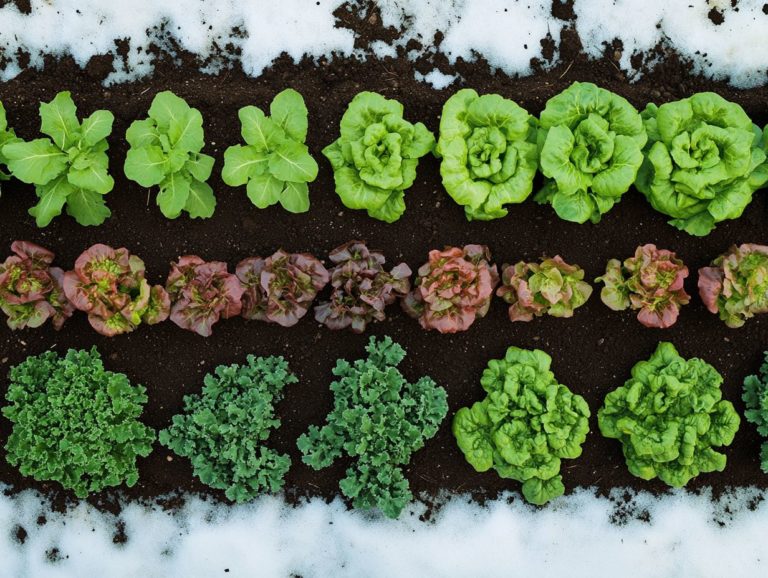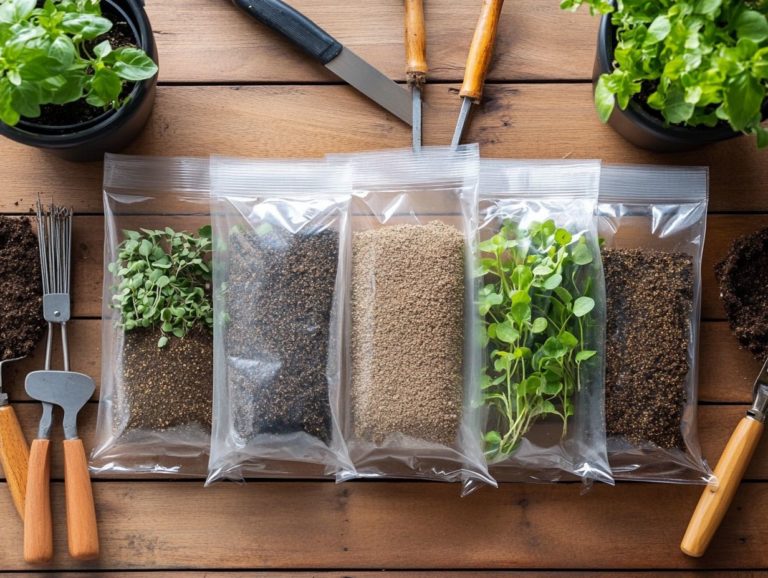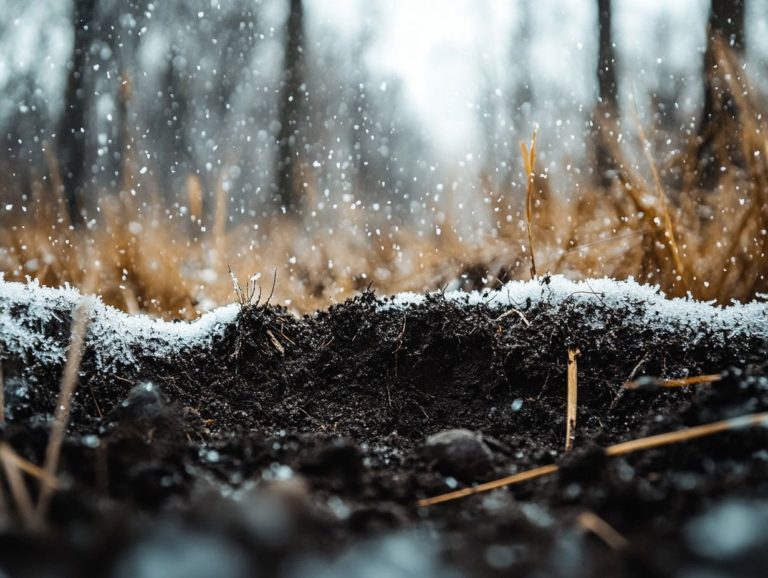Understanding Soil Microorganisms in Cold Climates
Soil microorganisms are pivotal in maintaining soil health, particularly in cold climates where conditions can be quite harsh and demanding.
These minuscule yet mighty organisms, including bacteria and fungi, are indispensable for nutrient cycling and the overall functioning of the ecosystem. Their activity is shaped by various factors, such as temperature and moisture levels.
This article delves into the types of microorganisms present in cold climate soils, the methods employed to study them, and the impacts of climate change on their communities. Discover how you can promote robust microbial communities and bolster the resilience of these essential ecosystems.
Contents
- Key Takeaways:
- The Importance of Soil Microorganisms in Cold Climates
- Types of Microorganisms Found in Cold Climate Soils
- Factors Affecting Microorganism Activity in Cold Climate Soils
- Methods for Studying Soil Microorganisms in Cold Climates
- The Role of Microorganisms in Nutrient Cycling in Cold Climate Soils
- Impacts of Climate Change on Soil Microorganisms in Cold Climates
- Practices for Promoting Healthy Microorganism Communities in Cold Climate Soils
- Frequently Asked Questions
- What are soil microorganisms?
- How do soil microorganisms survive in cold climates?
- What is the importance of understanding soil microorganisms in cold climates?
- Are soil microorganisms crucial for nutrient cycling?
- How can extreme cold temperatures affect soil microorganisms?
- Can soil microorganisms survive in permafrost?
Key Takeaways:
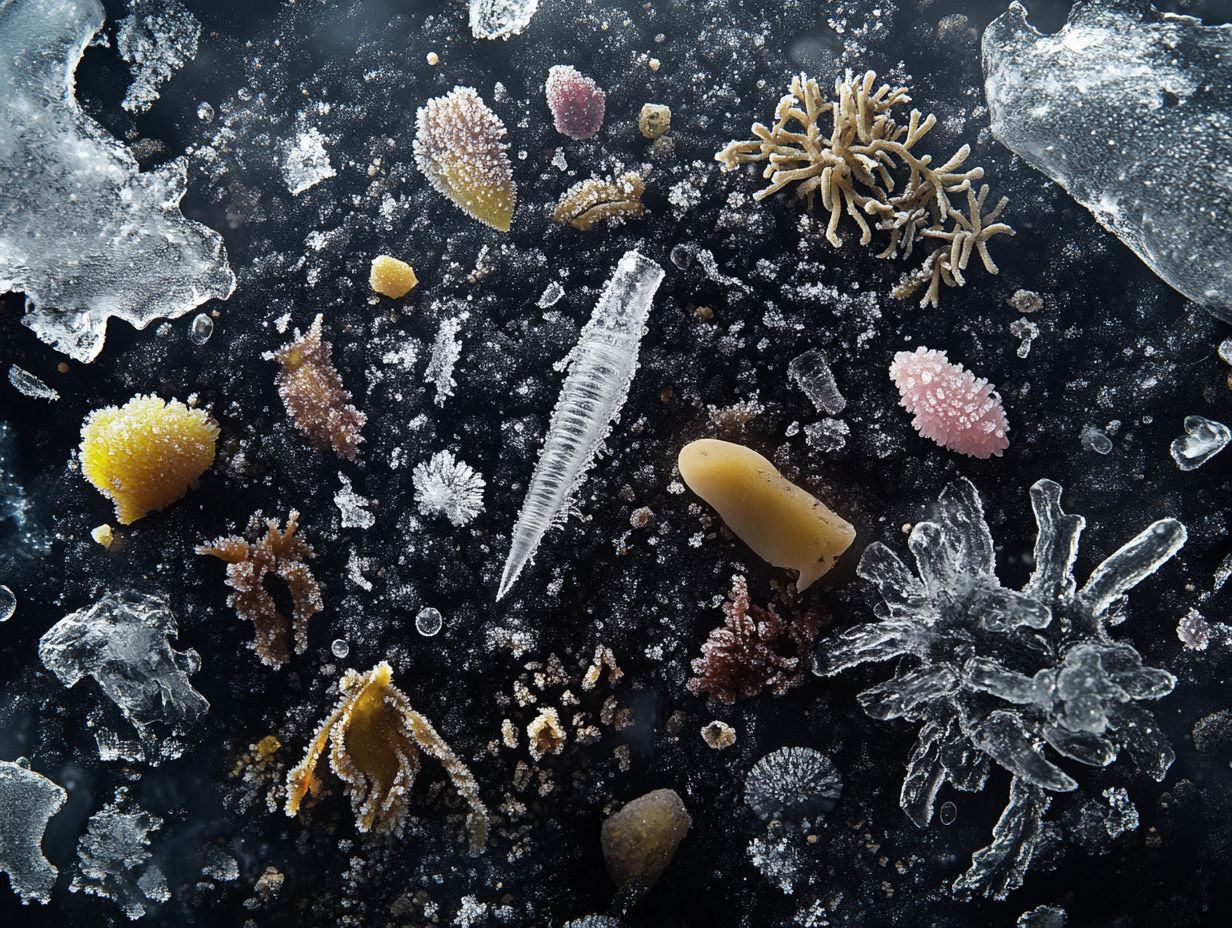
- The health of soil microorganisms is crucial for maintaining soil health and nutrient cycling in cold climates.
- Bacteria, fungi, and other microorganisms play important roles in these processes.
- Environmental factors like temperature and moisture significantly impact microorganism activity, while climate change poses risks to these communities.
The Importance of Soil Microorganisms in Cold Climates
In cold climates, the significance of soil microorganisms is paramount. They play an essential role in maintaining soil health, enhancing nutrient cycling, and supporting plant growth, even in challenging conditions like freeze-thaw cycles and low temperatures.
These microorganisms include bacteria, fungi, and protozoa. They break down plant and animal remains, which affects the soil’s composition and structure.
Their activity is crucial for sustaining agricultural soils, particularly in areas grappling with climate change. The balance of soil nutrients and microbial communities can directly affect crop yields and overall ecosystem function.
Understanding these microorganisms is crucial for thriving plants in harsh environments. Let s discover how to harness their power!
How Microorganisms Contribute to Soil Health
Soil microorganisms play a crucial role in elevating soil health and enhancing microbial biomass. They also influence soil composition and structure, which are vital for nutrient availability.
Imagine these tiny yet powerful entities bacteria, fungi, and nematodes working tirelessly. They break down organic matter and recycle nutrients back into the soil.
Bacteria are essential in breaking down complex organic compounds, transforming them into simpler forms that plants can absorb easily. Fungi improve soil structure by forming networks of hyphae, the root-like structures of fungi, which enhance aeration and moisture retention.
Nematodes contribute by controlling the populations of other microorganisms. Together, these microorganisms cultivate a thriving environment that supports plant growth and enhances soil fertility.
Types of Microorganisms Found in Cold Climate Soils
In cold climate soils, you’ll find a diverse array of microorganisms, such as bacteria, fungi, protozoa, and nematodes. Each of these players has a distinct role within the soil microbial community.
Collectively, they all contribute to the vital health and functionality of soil in these challenging environments.
Bacteria, Fungi, and Other Microorganisms
Bacteria and fungi are the main soil microorganisms, playing essential roles in microbial growth, nutrient cycling, and the overall vitality of soil ecosystems.
These organisms work together to decompose organic matter, release crucial nutrients, and improve soil structure. Bacteria, known for their rapid reproduction, excel at breaking down complex compounds, while fungi create beneficial networks that optimize nutrient absorption. Together, they build a rich microbial community, which is vital for strengthening soil resilience against pathogens and environmental challenges.
You can significantly boost this microbial diversity by adopting practices like crop rotation, cover cropping, and reduced tillage. By fostering a thriving ecosystem, these methods allow beneficial bacteria and fungi to flourish, ultimately ensuring healthier soils and sustainable agricultural productivity.
Factors Affecting Microorganism Activity in Cold Climate Soils
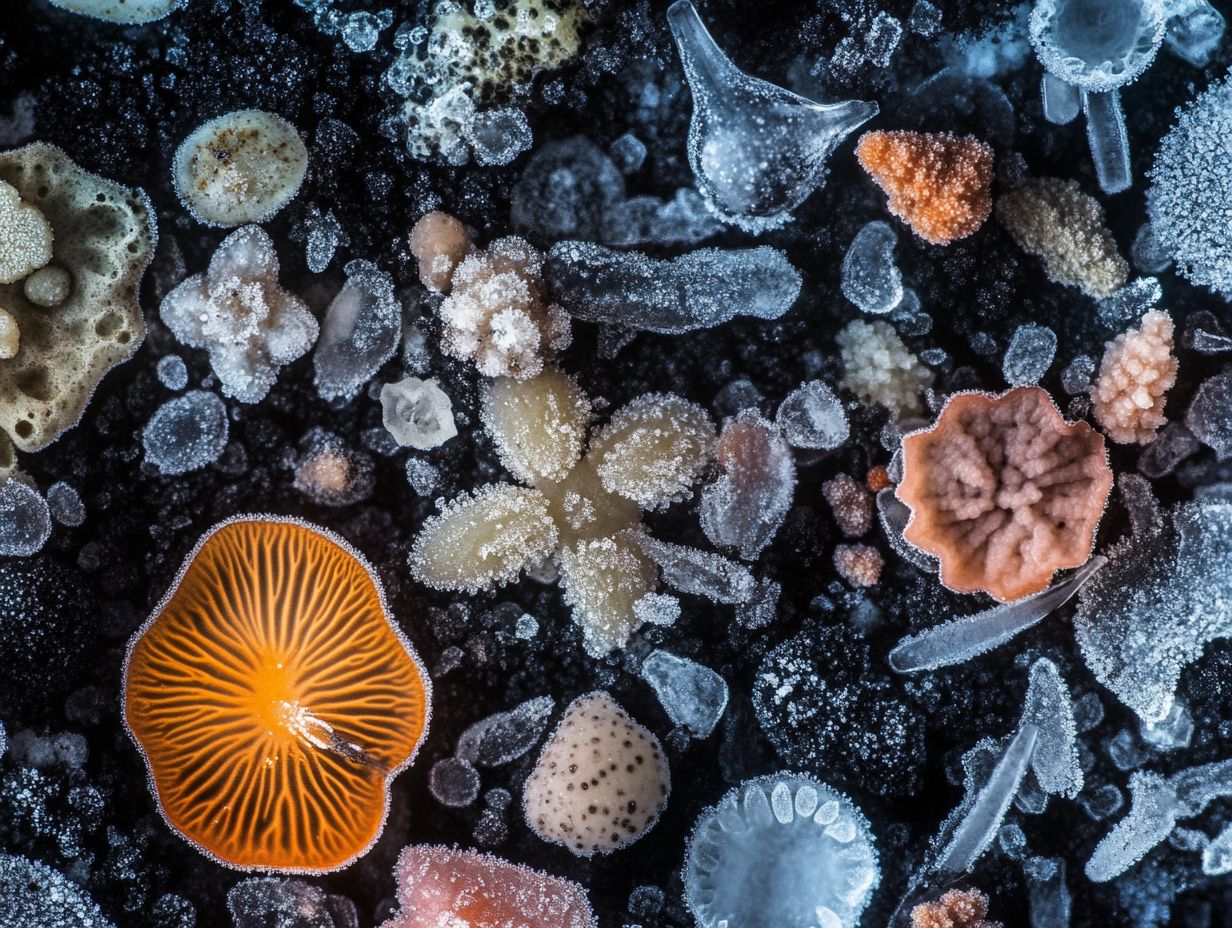
Several key factors greatly influence microorganism activity in cold climate soils. These include temperature, moisture levels, and the impacts of freeze-thaw cycles, all of which are crucial for shaping microbial growth and the overall health of the soil.
Understanding these elements enhances your appreciation of how dynamic and responsive these ecosystems can be, even in challenging environments.
Temperature, Moisture, and Other Environmental Factors
Soil temperature and moisture are key environmental factors that directly influence microbial activity, profoundly affecting the health and functionality of soil ecosystems in colder climates.
In these conditions, cooler temperatures can slow down microbial processes, while adequate moisture levels foster an inviting environment for diverse microbial populations. As temperatures rise and moisture reaches optimal levels, you ll see an increase in microbial activity, significantly enhancing nutrient cycling.
This interaction is crucial, as it determines how essential nutrients like nitrogen and phosphorus become available to plants, directly affecting their growth and productivity.
A vibrant microbial community not only contributes to the soil’s structure but also speeds up organic matter decomposition and strengthens resilience against pests and diseases, ultimately supporting the overall health of the soil.
Methods for Studying Soil Microorganisms in Cold Climates
Studying soil microorganisms in cold climates requires a variety of techniques and tools designed to evaluate how these microbes respond to their unique environmental conditions, including understanding soil pH in cold climates.
This approach provides invaluable insights into soil health and its dynamic processes, enhancing your understanding of ecosystem functionality.
Techniques and Tools Used in Microorganism Research
You can use a range of research techniques and tools to explore the fascinating world of soil microorganisms, enabling assessment of the microbial community and its critical role in soil health practices.
Among these techniques, DNA sequencing stands out as a method to analyze the genetic information of bacteria and fungi, allowing you to identify the diverse species thriving in the soil. Advanced microscopy methods further enhance your exploration by visualizing these microorganisms in real time, helping you understand their interactions and behaviors within the soil ecosystem.
Soil sampling methods, like core sampling and spatial sampling, are vital in your research efforts, offering representative samples that reflect the overall microbial diversity and health of the soil. Together, these approaches enrich your understanding of how microbial communities influence nutrient cycling, soil structure, and the overall functionality of ecosystems, guiding you toward more informed agricultural and environmental practices.
The Role of Microorganisms in Nutrient Cycling in Cold Climate Soils
Microorganisms play a key role in nutrient cycling within cold climate soils. They facilitate the decomposition of organic matter, ensuring that essential nutrients remain available.
This process is vital for keeping our soils healthy and thriving, underscoring the intricate relationship between these tiny organisms and the overall ecosystem.
Explore how you can enhance your soil’s vitality today!
How Microorganisms Help to Break Down and Recycle Nutrients
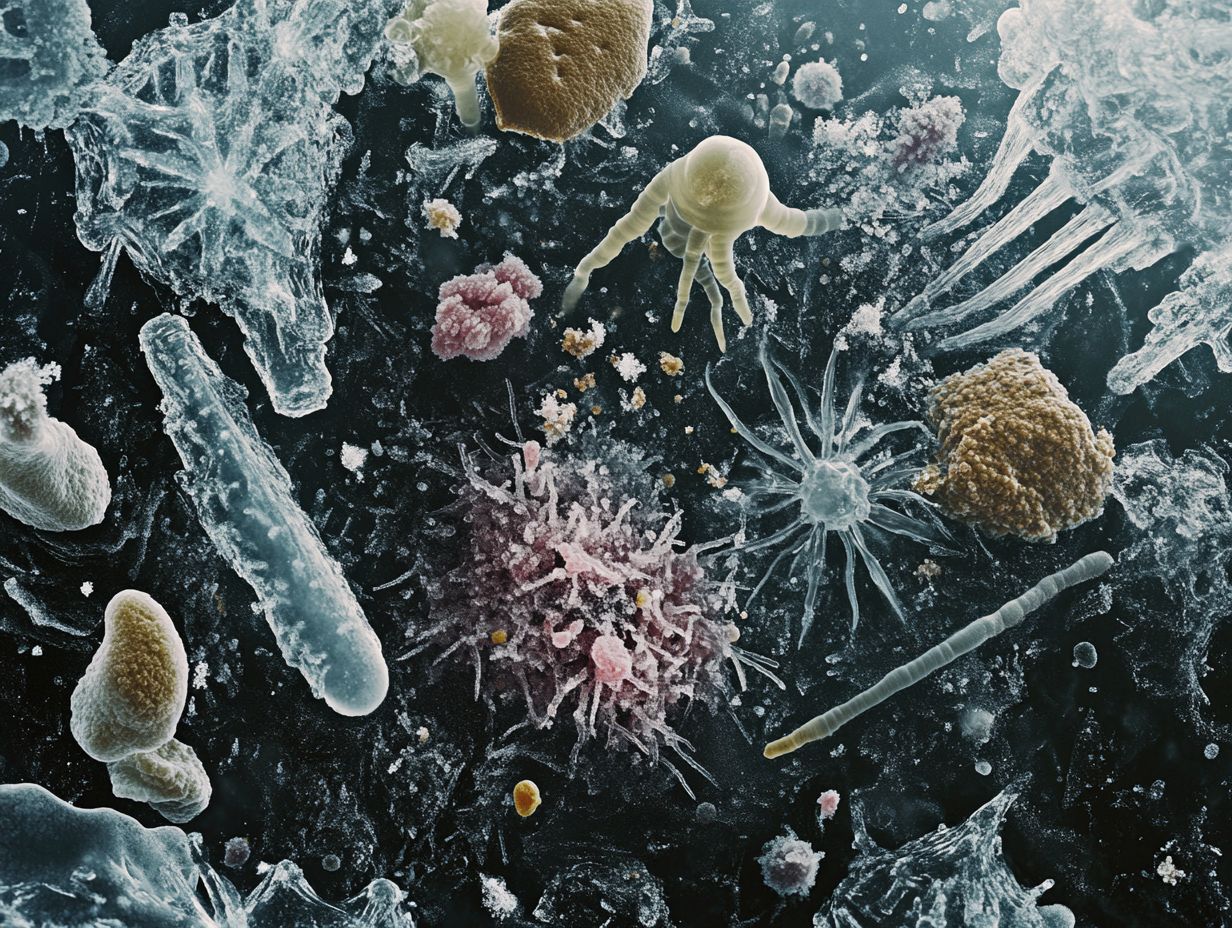
Discover how these tiny heroes enhance our soil! Microorganisms play a crucial role in breaking down and recycling nutrients. They ensure that essential soil elements are available for plant growth while maintaining overall soil health.
These powerful organisms include bacteria, fungi, and protozoa. They are essential in the decomposition process, tackling the breakdown of complex organic materials such as dead plant matter and animal remains. They employ enzymes, which are small proteins that help break down materials, to digest these substances at a molecular level.
As they decompose organic matter, they release vital nutrients like nitrogen, phosphorus, and potassium back into the soil. This nutrient recycling enriches soil quality and fosters a thriving ecosystem by supporting diverse plant life.
Microorganisms also improve soil structure. This enhancement helps the soil retain moisture and facilitates aeration, which is crucial for root growth and the overall function of the soil.
Impacts of Climate Change on Soil Microorganisms in Cold Climates
Climate change presents significant challenges to soil microorganisms in cold climates. It can reshape microbial communities and influence their roles within the ecosystem. This shift can have profound implications for soil health, ultimately affecting the entire environmental balance.
Potential Effects on Microorganism Communities and Functions
The potential effects of climate change on microorganism communities could disrupt their functions. This disruption impacts soil health and the dynamics of ecosystems, including various soil types that influence microbial communities.
Warmer temperatures and changing rain patterns affect many microorganisms, including bacteria, fungi, and protozoa. These changes lead to shifts in population dynamics and species diversity. Such alterations can hinder critical soil processes like nutrient cycling and organic matter decomposition.
These processes are vital for enhancing nutrient cycling and overall soil health. For example, a decline in beneficial bacteria can diminish nutrient availability for plants. An increase in pathogenic species might result in plant diseases.
Altered microbial communities can also affect soil structure. This hampers the soil’s ability to retain moisture and support crop growth. The challenges to food security and maintaining soil moisture levels become increasingly essential. We must understand these shifts now to protect our ecosystems!
Practices for Promoting Healthy Microorganism Communities in Cold Climate Soils
To promote robust communities of healthy microorganisms in cold climate soils, implement effective soil health practices. Consider the response of microorganisms to various soil nutrients and adopt sustainable agriculture techniques.
These approaches enhance microbial diversity, including cold-tolerant species. They also boost microbial activity, fostering a thriving ecosystem beneath the surface.
Strategies for Maintaining and Enhancing Microorganism Activity
Maintaining and enhancing microorganism activity in cold climate soils requires a thoughtful approach to soil health practices that promote nutrient availability and facilitate healthy soil.
This involves not just the careful application of organic amendments like compost and manure but also the strategic integration of cover crops, particularly winter cover crops. These crops can mitigate soil erosion, improve soil structure, and provide essential nutrients during the off-seasons. By planting species such as clover or vetch, you can cultivate a vibrant ecosystem that encourages beneficial microorganisms to thrive.
Using crop rotation and reduced tillage reduces soil disruption and enhances microbial growth by maintaining stable soil temperature, allowing those microbial communities to flourish. Together, these strategies create a more resilient soil ecosystem that can support healthy plant growth, even in challenging climatic conditions.
Frequently Asked Questions
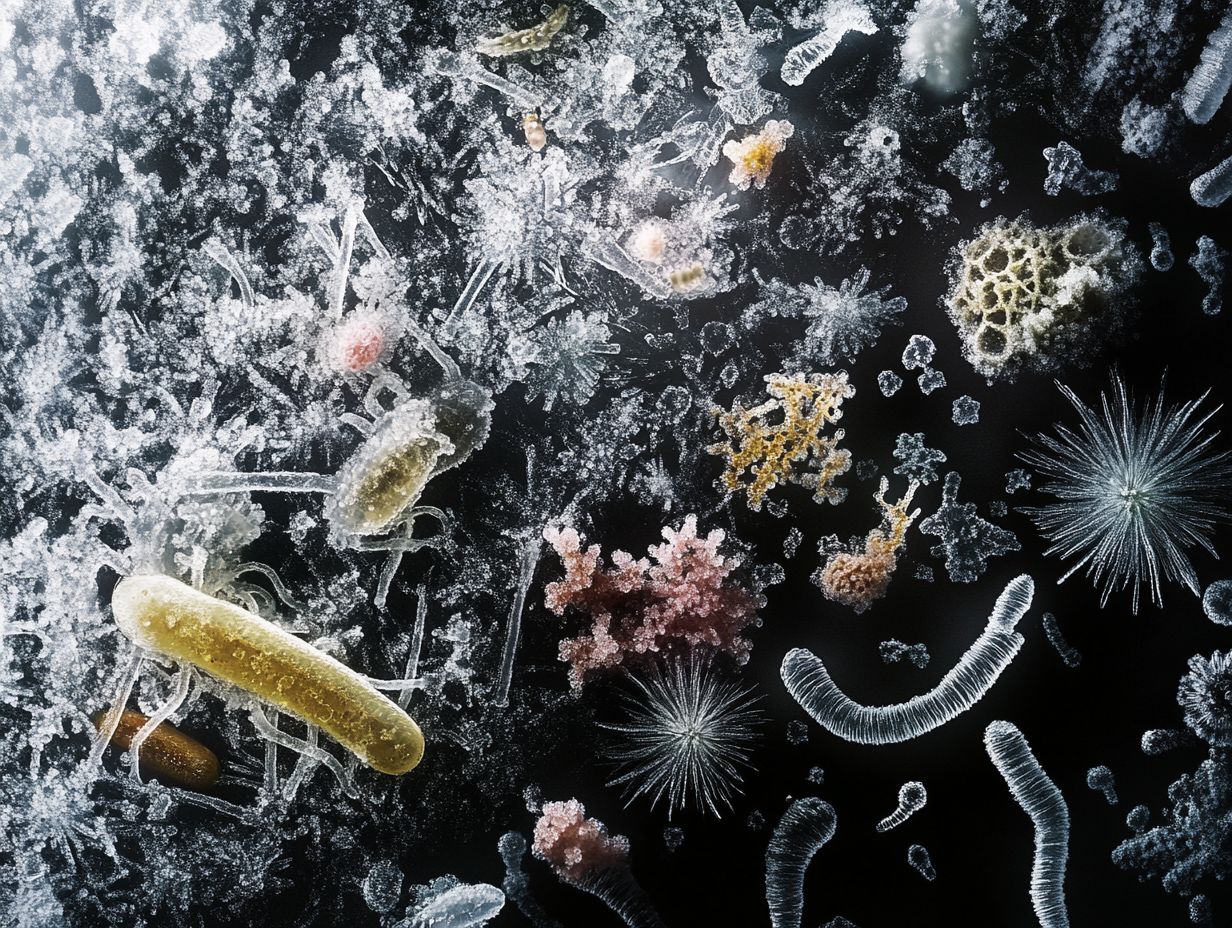
What are soil microorganisms?
Soil microorganisms, including bacteria, fungi, protozoa, and nematodes, are living organisms that exist in the soil. They play a vital role in supporting plant growth and maintaining soil health.
How do soil microorganisms survive in cold climates?
Soil microorganisms have adapted to survive in cold climates by adjusting their activity to fluctuating conditions, such as freeze-thaw cycles. They produce antifreeze compounds, form spores, and enter a dormant state during periods of extreme cold.
What is the importance of understanding soil microorganisms in cold climates?
Understanding soil microorganisms in cold climates is crucial for predicting how they will respond to temperature changes and how their activities affect soil health, nutrient availability, and plant root development.
Are soil microorganisms crucial for nutrient cycling?
Yes, soil microorganisms are responsible for breaking down organic matter and releasing nutrients for plant uptake, even in cold climates where the decomposition process is slower.
How can extreme cold temperatures affect soil microorganisms?
Extreme cold temperatures can slow down the activity of soil microorganisms. This can lead to a decrease in nutrient availability and affect the overall health of the soil, plants, and the carbon balance within the ecosystem.
Can soil microorganisms survive in permafrost?
Yes, some soil microorganisms have been found to survive in permafrost, although their activity is greatly reduced due to the extremely low temperatures and limited nutrient availability in this environment.
Join the movement towards healthier soils!



